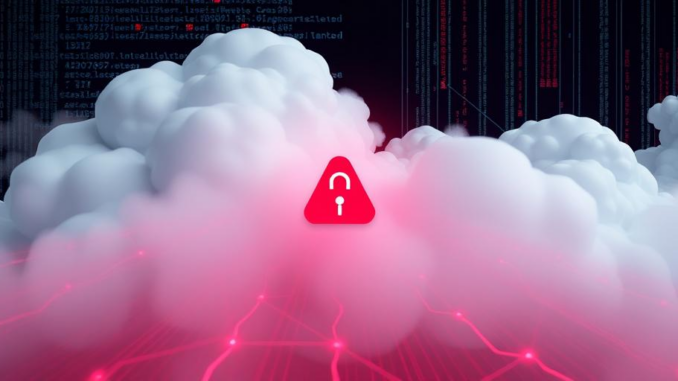
Summary
Ransomware gangs are targeting VMware ESXi servers by exploiting SSH tunnels, gaining persistent access, and deploying ransomware while evading detection. These attacks leverage the often-unmonitored nature of ESXi systems and their built-in SSH functionality. This article delves into the specifics of these attacks, their potential impact, and crucial security measures to mitigate this growing threat.
Explore the data solution with built-in protection against ransomware TrueNAS.
Main Story
Alright, let’s talk about something pretty concerning: ransomware actors are now actively targeting VMware ESXi hypervisors by exploiting SSH tunnels. I mean, these servers are the lifeblood of so many virtualized environments, you know? If those go down, it’s a real problem. It’s like the central nervous system of your IT infrastructure – you really can’t afford to have it compromised.
So, what’s happening? Basically, these attackers are finding ways to sneak in through the (SSH) back door.
Think of SSH as a secure tunnel; it’s meant to be a safe way to manage servers remotely. But, and this is a big but, if an attacker gets their hands on credentials or finds a vulnerability, they can create their own SSH tunnel. It’s like building a secret passage right into your network!
And once they’re in, they’re not just sightseeing. They move around, find what they’re looking for, and then BAM!, ransomware gets deployed. I remember reading a case study where a small company lost everything because of an attack like this. They weren’t monitoring SSH activity properly, and the attackers had free rein for weeks. Weeks!
Because often, let’s be honest, monitoring for ESXi SSH activity just isn’t robust enough. And, as a result, attacks often go unnoticed,
So, how do we fight back?
- First things first: Monitoring is KEY. You need to know who’s connecting to your ESXi servers and what they’re doing. Log everything, set up alerts for unusual activity. Don’t assume everything’s fine; actively look for trouble.
- Multi-factor authentication (MFA) is non-negotiable. I can’t stress this enough. Passwords alone aren’t enough anymore. MFA adds that extra layer of security that can stop attackers in their tracks, even if they have the password.
- Patch, patch, patch! Keep your ESXi servers up to date with the latest security patches. Attackers love exploiting known vulnerabilities, so don’t give them the opportunity.
- Restrict SSH access. Limit access to only those who absolutely need it. The fewer people who have access, the smaller the attack surface.
- Strong Passwords: Make sure to have strong password policies in place for all accounts. Don’t reuse passwords, and change them regularly.
Now, I know what you might be thinking: ‘This sounds like a lot of work.’ And you’re right, it is. But honestly, the alternative is far worse. The cost of a ransomware attack – downtime, data loss, ransom payments – can be crippling. It’s an investment in your peace of mind.
But, the threat landscape’s always changing, right? What works today might not work tomorrow. So you have to stay informed, adapt your security measures, and be prepared to respond quickly if something goes wrong.
Frankly, this whole situation points to a bigger problem: We sometimes overlook the security of crucial systems. We spend so much time focused on our main networks that we forget about the back-end infrastructure that keeps everything running. It’s a wake-up call to take a more holistic approach to security and look at everything.


Given the rise in ESXi server attacks via SSH, have there been any analyses on the effectiveness of intrusion detection systems specifically tailored for virtualized environments?
That’s a great question! I haven’t seen any comprehensive analyses specifically focused on IDS effectiveness in virtualized ESXi environments against these SSH exploits. It highlights a critical gap in our understanding and defense strategies. Perhaps some security vendors or research groups have data – definitely worth exploring further! Thanks for raising this important point.
Editor: StorageTech.News
Thank you to our Sponsor Esdebe
So, SSH tunnels are the new black, huh? Clever hackers, finding the “secure” backdoor. Now, who wants to bet that half of these ESXi installs are still running with default SSH configurations and passwords?
That’s a great point! Default configurations are definitely low-hanging fruit for attackers. It highlights the need for increased awareness and proactive security measures, especially for those essential ESXi environments. Let’s encourage everyone to double-check those settings and enforce strong password policies!
Editor: StorageTech.News
Thank you to our Sponsor Esdebe
Given the potential for weeks of undetected access, what strategies are most effective in accelerating the detection of malicious SSH tunnel creation or usage within ESXi environments?
That’s a really important question! Speeding up detection is critical. I think focusing on real-time log analysis and behavioral analytics for SSH sessions would be a game-changer. Anyone using specific tools or techniques for rapid anomaly detection in ESXi environments? Let’s share some ideas!
Editor: StorageTech.News
Thank you to our Sponsor Esdebe